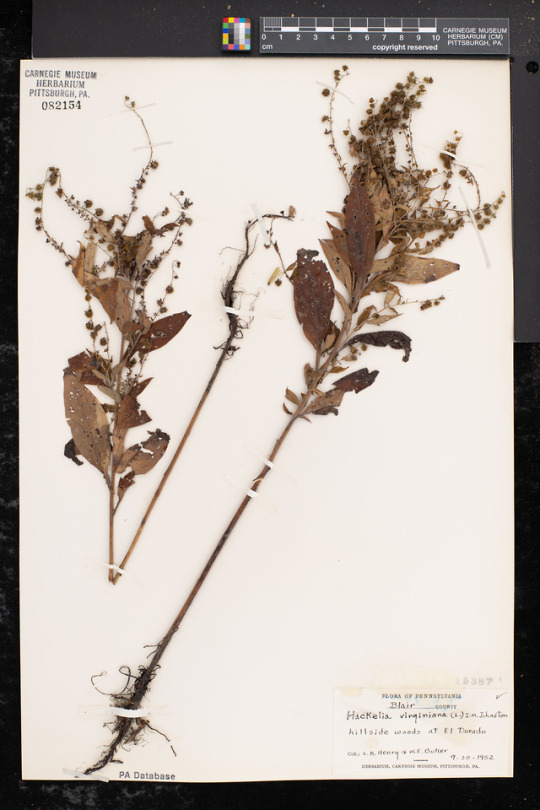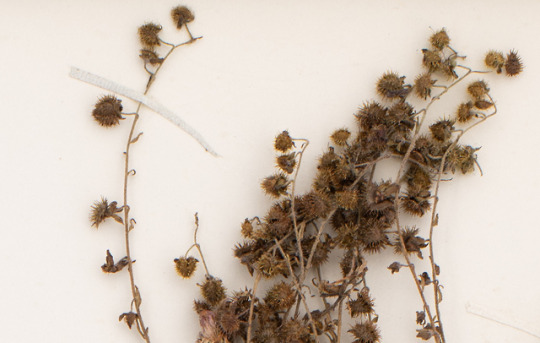
It’s fall seed dispersal time!
This specimen of Virginia stickseed (Hackelia virginiana), also interestingly called beggar’s lice, was collected on September 20, 1952 by Leroy Henry (Carnegie Museum Curator of Botany at the time) in the woods of Blair county, Pennsylvania.
The common name for this plant is quite appropriate. The small seeds have many burs on them, making them very sticky. And stick to your clothes with barely a touch, making them easily dispersed (unknowingly) by animals.
If you have a dog, you’ve likely pulled these out their fur in the fall! My dog was covered in them the other day, which was both amazing and annoying at the same time.
Stickseed is in the borage family, Boraginaceae. It has very small white flowers that resemble forget-me-not, also in the same plant family. However, it is the fruit/seeds that are most memorable.
Find high resolution image of this Virginia stickseed specimen (and more) online here:
midatlanticherbaria.org/portal/collections/individual/index.php?occid=12253345&clid=0

Check back for more! Botanists at the Carnegie Museum of Natural History share digital specimens from the herbarium on dates they were collected. They are in the midst of a three-year project to digitize nearly 190,000 plant specimens collected in the region, making images and other data publicly available online. This effort is part of the Mid-Atlantic Megalopolis Project (mamdigitization.org), a network of thirteen herbaria spanning the densely populated urban corridor from Washington, D.C. to New York City to achieve a greater understanding of our urban areas, including the unique industrial and environmental history of the greater Pittsburgh region. This project is made possible by the National Science Foundation under grant no. 1801022.
Mason Heberling is Assistant Curator of Botany at the Carnegie Museum of Natural History. Museum employees are encouraged to blog about their unique experiences and knowledge gained from working at the museum.
